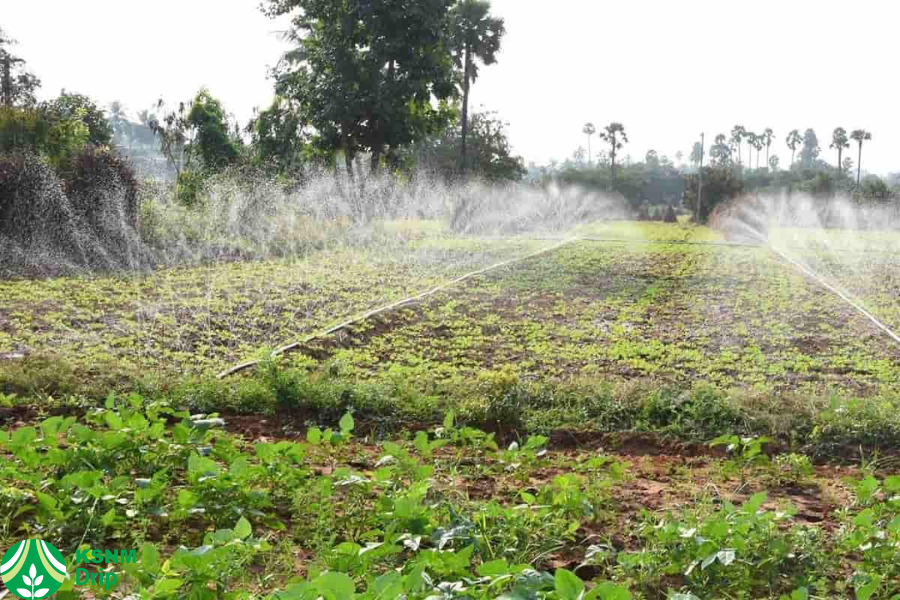Posted On: July 16, 2024
Posted By: KSNM DRIP

Onion farming is a delicate and precise process that requires careful attention to detail to yield successful results. One of the key aspects of onion farming that often goes unnoticed is the importance of proper irrigation methods. Traditional methods of irrigation can be time-consuming, labour-intensive, and often result in uneven watering patterns. However, the use of rain hose irrigation has been gaining popularity among onion farmers due to its efficiency and effectiveness.
Yes, for your onion cultivation, you should use rain hose irrigation as it can increase the yield by 70% when compared with traditional irrigation methods. Getting a rain hose irrigation system from KSNM Drip makes it much better with its quality material. Get rain hose for your onion crops today and increase its yield.
Rain hose irrigation ensures precise water delivery to the root zone of onion plants. This precision minimizes water wastage, ensuring that every drop is utilized effectively. As a result, farmers can maintain healthy crops even in water-scarce regions.
Setting up a rain hose irrigation system is cost-effective. The materials required are affordable, and the installation process is straightforward. Additionally, this system reduces labour costs as it requires less manual intervention compared to traditional irrigation methods.
By providing a consistent and adequate water supply, rain hose irrigation significantly boosts onion crop yields. The even distribution of water prevents stress on plants, leading to robust growth and higher productivity.
Traditional irrigation methods can lead to soil erosion due to uneven water distribution. Rain hose irrigation mitigates this issue by delivering water gently and uniformly, preserving soil structure and fertility.
Rain hose systems are easy to install and maintain. Farmers can set up the hoses across their fields without the need for specialized equipment. Regular maintenance involves simple checks for leaks and blockages, ensuring the system operates efficiently.
Rain hose irrigation systems are highly adaptable to different field sizes and shapes. Farmers can customize the layout to suit their specific needs, ensuring optimal water coverage across their entire crop area.
Using rain hose irrigation supports sustainable farming practices. The system�s efficiency in water use reduces the strain on local water resources. Furthermore, promoting healthier crops contributes to reducing the need for chemical fertilizers and pesticides.
Rain hose irrigation is an effective and efficient method for watering onion fields. Installing a rain hose system is straightforward and offers numerous benefits, including water efficiency and improved crop yields. This guide will walk you through the steps to install a rain hose for your onion field.
First, plan the layout of your rain hose system. Measure your onion field to determine the length of hoses required. Ensure the layout provides even coverage, avoiding any gaps that could lead to uneven watering.
Clear the field of debris and weeds. Level the soil to ensure uniform water distribution. Mark the positions where you will lay the hoses using stakes or pegs.
Cut the rain hoses to the desired lengths using scissors or a hose cutter. Attach connectors to the hose ends, ensuring a secure fit. If using multiple hoses, connect them using T-joints or elbow connectors as needed.
Attach a pressure regulator to your water source to maintain consistent water pressure. Connect a filter to remove any debris that could clog the hoses. Ensure these components are securely attached before proceeding.
Lay the rain hoses along the marked lines in your field. Position the hoses so that the perforations face upward. This ensures water is evenly distributed across the field. Secure the hoses in place using stakes or pegs.
Attach the rain hoses to the water source. Ensure all connections are tight to prevent leaks. Turn on the water supply to test the system. Check for even water distribution and adjust the hose positions if necessary.
Inspect the entire system for leaks or blockages. Ensure all connections are secure and that water flows freely through the hoses. Clear any blockages to maintain optimal performance.
Regularly monitor the system to ensure it operates efficiently. Check for leaks, clean the filter, and adjust hose positions as needed. Regular maintenance will prolong the life of your rain hose system and ensure your onion crops receive consistent watering.
The advantages of using rain hose irrigation for onion crops are clear. This method enhances water efficiency, reduces costs, and increases crop yields. Its ease of installation and maintenance, coupled with environmental benefits, makes it an excellent choice for modern farmers. By adopting rain hose irrigation, onion farmers can achieve better results while contributing to sustainable agriculture.